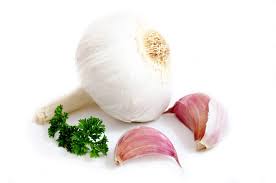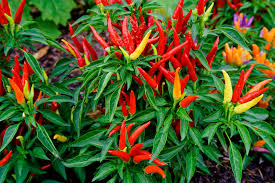How to Use Epsom Salt to Promote Healthy Plants

The use of Epsom salt in the garden is a safe method of boosting our garden plants’ health. What Epsom salt does is to enhance a plant’s green color along with flower bloom. Epsom salt consists of water, sulfate, and magnesium, stick around and learn the wonders of Epsom salt in the garden.
The soil is at the heart or root of garden plants which means soil does matter, there are many soil types so get to know your soil type and how to adjust if needed to meet your plant’s requirements. Before adding Epsom salt it is good to get a soil pH test done for the amount of magnesium that may be lacking.
The Benefits of Epsom Salt in the Garden
- Magnesium is a major element that helps garden plant roots to absorb essential nutrients such as sulfur, nitrogen, and phosphorus. Since Epsom salt contains magnesium it helps to absorb nutrients.
- A lack of magnesium may cause leaves to curl, adding 2 tablespoons of Epsom salt in a gallon of water and applying it to the plant’s foliage or leaves will offer some help.
- Epsom salt will increase the sweetness of fruits, Epsom salt will increase the amount of chlorophyll, increasing the plant’s energy to produce more sugar that will contribute to healthy and thriving plants. 1 to 1 1/2 tablespoons in a gallon of water should do.
- Plants such as peppers, roses, and tomatoes require lots of magnesium to grow healthy. The use of Epsom salt will help greatly.
- Epsom salt can boost flower bloom and green shrubs. Work in 1 tablespoon of Epsom Salt per nine square feet of bush into the soil, over the root zone. Repeat this every 2-4 weeks for optimal results.
- If your soil is lacking magnesium then the use of Epsom salt by applying it to the soil will help greatly.
- The use of Epsom salt on indoor plants is recommended to keep your plants growing healthy. 2 tablespoons of Epsom salt to 1 gallon of water will work wonders.
- Pepper trees are susceptible to magnesium deficiency. Epsom salt can be used to correct this issue. Add 1- 2 tablespoons to the area before planting pepper seeds for starting and mature pepper plants. Add Epsom salt twice a week based on the height of your pepper plant.
- It is believed that “misting plants leaves with a solution of Epsom salt and water or sprinkling around the plants base or roots will keep garden insect pest along with snails and slugs away”.
- 2 tablespoons of Epsom salt in a gallon of water is a great way to feed your plants through their foliage or leaves once a month by misting the leaves.
- 2 tablespoons of Epsom salt to a gallon of water applied to the roots of nut trees will increase the nuts flavors.
- Drenching seeds with Epsom salt and water is a great way to strengthen the cell wall boosting germination. Adding 1 tablespoon of Epsom salt to 1 gallon of water to the soil after planting will get your seeds off to a good start.
- Fill your 1-gallon tank sprayer with a gallon of water and a tablespoon of Epsom salt shake well and apply to your vegetable garden bed will produce good crop yield.
- Tomatoes are susceptible to magnesium deficiency during the late growing season, symptoms include yellow leaves and poor tomato production. Using Epsom at the start of planting and throughout the season can help prevent magnesium deficiency. Add 1-2 tablespoons of Epsom salt to the area previous to planting seeds or transplants. As your tomatoes mature, you can work in 1 tablespoon of Epsom salt per foot of tomato plant height and around the base of each tomato plant.
- Adding Epsom Salt to the soil will boost the health of your trees especially if your tree blossoms or is the fruit-bearing type. Epsom salt can increase the production of the flower and the fruits. Work in 2 tablespoons per nine square feet into the soil over the entire root zone 3-4 times a year. Doing this at the beginning of each season is a good way to prepare your trees when the weather changes.
- Epsom salt is ideal to fight against lawn yellowing creating a healthier-looking grass. Apply Epsom salt with the help of a hose and spray attachment, a tank sprayer, or a lawn spreader. Apply 3 pounds per 1250 square feet (25′ x 50′), six pounds per 2500 square feet (50′ x 50′), and twelve pounds per 5000 square feet (50′ x 100′). When using a hose and spray attachment or a tank sprayer make sure that Epsom salt dissolves by diluting it in lots of water for a good application.
Over Use of Epsom Salt
Overuse of Epsom salt can inhibit the uptake of calcium, may pollute groundwater through leaching, and can cause leaf scorch if not properly diluted.
Note: Epsom salt is not a cure-all for your garden plants what we have done is simply look at some of the benefits that are derived from properly using this salt, by all means, other measures such as watering, fertilizing, pruning, etc… should be carried out in your garden to have success.
Your lawn and Epsom salt
Besides garden plants Epsom salt can also benefit your lawn, helping to enrich the color. The way this is done is by placing Epsom salt in a spreader or add to water and once it dissolves add it to a tank sprayer then apply it to your lawn will have your lawn looking so great.
Garden Shrubs
Garden shrubs in landscapes and gardens have become popular and are used in many landscape designs. Shrubs are low-maintenance plants and bring their flavors which gives that wow. Shrubs can be used as a hedge bringing separation, for security purposes, as a screen, to provide color, and to attract pollinators.
The use of Epsom salt around shrubs will give them the added boost that will benefit them so if you are thinking about applying it to your shrub then go ahead to keep your shrubs growing healthy and vibrant.
Some herbs that will benefit from Epsom salt
Herbs are used to give our favorite dishes a sumptuous taste. Here are a few herbs that benefit from Epsom salt.

- Rosemary.
- Chives.
- Garlic.
- Cilantro.
- Parsley
- Basil.
- Oregano.
- Tarragon.
Vegetables that benefit from Epsom salt

- Peppers.
- Bell Peppers.
- Onion.
- Beets
- Okras.
- Carrots.
- Celery.
- Potatoes
All Check Other Natural Garden Remedies
10 Frequently Asked Questions (FAQs)
1. What is Epsom salt, and why use it in the garden?
Epsom salt is actually magnesium sulfate, not table salt! It provides two key nutrients — magnesium and sulfur — that help plants grow stronger and greener, especially if your soil is lacking.
2. Which plants benefit the most from Epsom salt?
Plants like tomatoes, peppers, roses, and leafy greens love the magnesium boost. It helps them produce more chlorophyll and improves nutrient absorption.
3. How do I apply Epsom salt to garden soil?
You can either sprinkle it directly into the soil or mix it with water for a foliar spray. A common method is to mix 1 tablespoon of Epsom salt per gallon of water and apply every few weeks.
4. Can I use Epsom salt in my vegetable garden?
Yes, and many gardeners do! It’s especially helpful for tomatoes and peppers, which are often prone to magnesium deficiencies. Just don’t overdo it—more isn’t always better.
5. Is Epsom salt good for flowers too?
Absolutely! Epsom salt can help flowering plants produce more blooms and deeper color. Roses, in particular, love an occasional Epsom salt treat during the growing season.
6. Can I use Epsom salt in potted plants?
Yes, but be cautious. Containers hold onto salts more than garden soil, so use a diluted mix (1 teaspoon per gallon) and apply once a month to avoid salt buildup.
7. Does Epsom salt help with pest control?
Some gardeners say Epsom salt helps deter pests like slugs, especially when sprinkled around plant bases. While not a guaranteed method, it can add a little extra defense.
8. How do I know if my garden needs Epsom salt?
Look for signs of magnesium deficiency, like yellowing between leaf veins or slow growth. You can also get your soil tested for a more accurate answer.
9. Can I mix Epsom salt with other fertilizers?
Yes! Epsom salt can be used alongside other organic or synthetic fertilizers. Just follow label instructions so you don’t overload the soil with nutrients.
10. Are there any risks to using too much Epsom salt?
Yes—too much can lead to soil imbalance and poor plant performance. Always start small, and if you’re unsure, test your soil first. A little goes a long way!
Conclusion
The use of Epsom salt in the garden is so beneficial, this is a safe and inexpensive way to boost your garden plants’ health. After you have read what Epsom salt can do I encourage you to take full advantage of this salt that has proven to work wonders so join the many gardeners that is having much success with this proven method and give your garden plants the boost that they need as they grow healthy giving you a good harvest. With that said let’s get started.









